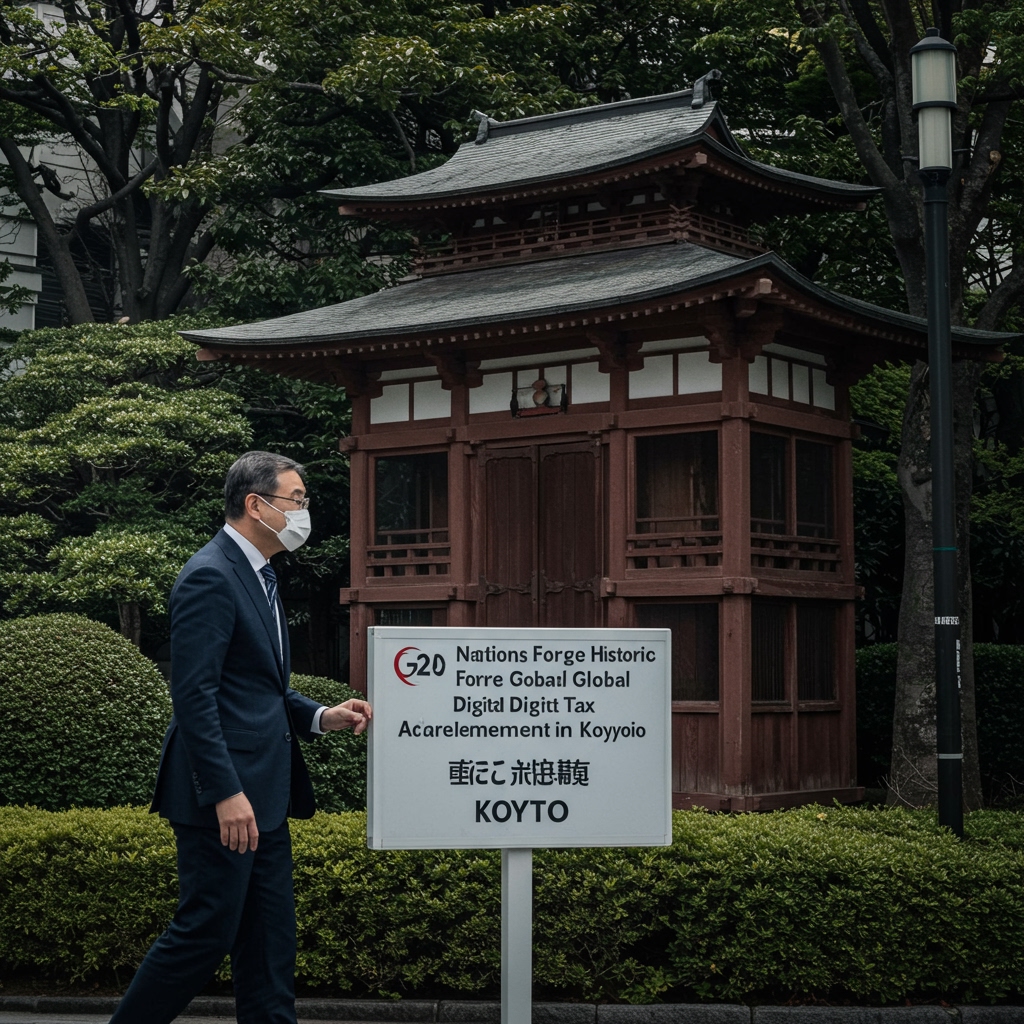A Landmark Agreement Reached in Kyoto
In a pivotal moment for international finance, finance ministers from the Group of Twenty (G20) nations, convening in Kyoto, Japan, announced a significant breakthrough agreement on April 20, 2025. This consensus establishes a global framework designed to address the complex challenge of taxing multinational digital corporations in an increasingly borderless economy. The agreement, years in the making through extensive negotiations and collaboration, aims to modernize international tax rules which have struggled to keep pace with the digital transformation of business models.
Core Pillars of the Framework
At the heart of the newly agreed-upon framework are two primary components intended to create a more equitable and stable global tax system. The first is the establishment of a global minimum corporate tax rate set at 15%. This minimum rate is designed to limit the incentive for multinational enterprises (MNEs) to shift profits to low-tax jurisdictions, thereby reducing harmful tax competition among countries. By ensuring a floor on corporate taxation, nations hope to secure fairer contributions from highly profitable global businesses.
The second crucial element of the framework involves new rules for allocating a portion of the profits of the largest and most profitable multinational corporations to the jurisdictions where their consumers or users are located – often referred to as ‘market jurisdictions.’ This deviates significantly from traditional international tax rules that typically allocate profits based on physical presence, an outdated concept for businesses operating digitally across borders. This change seeks to ensure that companies pay tax not just where they have headquarters or tangible assets, but also where they generate significant revenue from customer engagement and sales.
Addressing Profit Shifting and Tax Avoidance
For years, governments worldwide have grappled with the issue of profit shifting and tax avoidance by large multinational corporations, particularly those in the digital sector. Companies have been able to legally minimize their tax liabilities by attributing profits generated from activities in high-tax countries to subsidiaries located in countries with significantly lower tax rates, often where there is little substantive economic activity. This practice has eroded national tax bases, creating unfair competitive advantages and fueling public discontent.
The framework agreed upon in Kyoto is specifically designed to counteract these strategies. The 15% minimum tax acts as a backstop, ensuring that even if profits are shifted to a low-tax country, the MNE will still face a top-up tax in its home country or other jurisdictions to reach the 15% rate. The profit reallocation rules, conversely, aim to give market jurisdictions the right to tax a share of the MNE’s residual profit, irrespective of physical presence, linking taxation more closely to market activity and value creation.
Momentum Driven by Global Cooperation
The journey towards this agreement has been long and fraught with complex negotiations, reflecting the diverse economic interests and tax systems of the participating nations. The G20, working alongside the Organisation for Economic Co-operation and Development (OECD), has served as the primary forum for these discussions. Key nations, including the United States and France, have been instrumental in championing the necessity of these reforms and driving the process forward, navigating disagreements and building consensus among a large and varied group of countries.
The agreement announced on April 20, 2025, in Kyoto represents a significant diplomatic achievement, demonstrating the capacity for major economies to cooperate on intricate global issues. It signifies a shared recognition that the current international tax system is no longer fit for purpose in the 21st-century global economy and that coordinated action is essential to ensure tax fairness and stability.
Expected Impacts and Future Steps
The implementation of this global digital tax framework is expected to have far-reaching consequences. Most notably, it will significantly impact large multinational corporations, particularly the major technology giants, which often operate across numerous borders with minimal physical footprints. These companies may face increased tax liabilities in market jurisdictions where they generate substantial revenue, as well as potentially higher overall effective tax rates due to the 15% minimum.
For governments worldwide, the framework is anticipated to boost tax revenues. By curtailing profit shifting and capturing taxes in market jurisdictions, countries could see an increase in their corporate tax collections, providing additional resources for public services and investment. It also promises to create a more level playing field among businesses, reducing the tax advantages previously enjoyed by MNEs adept at international tax planning.
Despite the landmark agreement reached in Kyoto, the process is far from complete. Details on the specific rules for implementation, technical mechanics of profit reallocation and minimum tax application, and, crucially, the processes for ratification by individual member states are still being finalized. Each participating country will need to enact domestic legislation to bring the framework into effect, a process that could present further political and legal challenges.
Nonetheless, the agreement on April 20, 2025, stands as a historic step towards updating the international tax architecture for the digital age. It lays the foundation for a more coherent, fair, and effective global system for taxing multinational corporations, promising a significant shift in how global profits are taxed and shared among nations.





